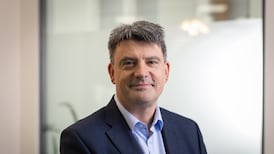BEFORE the arrival of Ryanair in 1985, passengers travelling to Britain were typically paying more than £200 for return flights, and at that price many people were more inclined to take the boat. The same flight today could cost anything from £59 to £99, with passenger numbers constantly growing. Many people would say that it is largely thanks to Ryanair.
It has been a long and turbulent 12 years for the privately owned airline, which first started a small charter company run by its current deputy chairman and pilot, Mr Cathal Ryan. In 1985, the airline offered flights to London and other European capitals for groups of up to 15 passengers.
The following year, with an investment of £2.5 million, it boldly took on Aer Lingus and the other big players on what had become the busiest route in Europe, offering cheap flights between London and Dublin.
Aer Lingus and British Airways were nonplused when they realised that Ryanair was offering return flights to London for around £99 when their fares were more than double that price.
As the airline was taking to the air, Aer Lingus and British Airways both applied to the Department of Transport to be also allowed to offer lower fares, citing cheaper fuel costs as the driving factor behind their request.
Instead of flying to Heathrow, Ryanair opened up its first route between Dublin and Luton, but was initially only allowed to use 44-seater planes. Later that year, it was granted approval to introduce jets.
The combination of cheap fares and easy regional access, particularly for people travelling to Britain, quickly encouraged more people to fly. In the 10 years before its establishment, annual airline traffic between London and Dublin had remained static at between 800,000 and 850,000 passengers a year. In less than four years this figure jumped to 2.6 million.
Ryanair, from its inception, was owned virtually 100 per cent by Dr Tony Ryan's family through a trust. The millionaire founder of Guinness Peat Aviation, together with his three sons was, however, soon confronted with the commercial reality of a low fares policy.
The cost of its battle with Aer Lingus quickly mounted, with the company incurring losses of £3 million by the end of 1987. The following year the losses were greater, at £7.34 million, and Ryanair was forced to undergo an extensive overhaul of its business.
In the early years, Dr Ryan was said to have taken only an advisory role in the running of the company, with the first chief executive, Mr Eugene O'Neill, publicly introducing the cheaper air fares package to. the passengers. He left the company in 1988, taking a High Court action against it following his departure.
He was succeeded by Mr P.J. McGoldrick, who immediately set a restructuring programme in train which included cash injections of £26 million from the Ryan family. The airline sought out cost savings throughout all areas of its business, dropping unprofitable routes and reducing its workforce by more than 15 per cent and asking staff to take a drop in pay.
IN 1991 Ryanair was carrying accumulated losses of more than £20 million and many of its senior management had left the company. Mr McGoldrick departed to set up his own airline service and was quickly followed by up to six other senior executives who moved to other airlines, prompting widespread concern about the financial health of the company.
The following year, however, signs finally began to emerge that the airline had weathered the storm, recording pre-tax profits of £300,000. Mr Conor Hayes then became chief executive and was soon joined by former EU commissioner, Mr Ray MacSharry, who became chairman in 1993.
The company had then managed to make profits of £550,000 despite heavy losses on the back of surging passenger numbers.
The current chief executive, Mr Michael O'Leary, took over the helm in 1993 and has helped to steer much of the airline's preparations for its flotation.
That year, Aer Lingus made an approach, tentatively indicating it might pay £20 million for the airline, an offer which was swiftly rejected by the Ryan family, unhappy at the valuation of the company.
It is only in the last year that Dr Ryan took up a public role within the company, taking over as executive chairman in 1996. Since then he has publicly pioneered the notion of a second airport for Dublin, advocating the creation of a commercial air field at Baldonnel, and has pledged £50 million towards its development.
Dr Ryan struck up negotiations with potential partners to enlarge the airline enough to consider a flotation. He concluded a deal with US investor Mr David Bonderman for a 20 per cent stake in the airline which valued the company at £56 million. Mr Bonderman subsequently took over as chairman and will now be a key figure in attracting US investors to back the flotation.









